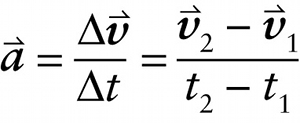Chapter 7. Acceleration vector equals change in velocity vector divided by time interval (3-9)
Question
DgJGkKep3IpOFpKZ64BGRyOeKJaBAgPuc5L/RTd7h3HY26y7DQPCAkAaNJtXK4leGZb7VtOhcK2GhF/QEFLRruRQ0E392yeOQF4l16OB9YWZ+6bYRy5+ll7JTd+pUwPpVAUPTXo2NFFvgmfBIoyqyaVTh+rLhmXuh3gdnnmP7Lg=
Question
MwFXDPmLwlhqCE0CYwjVIMkP6YtvUs4yELIgYNIEfxpm8YUguGnBjjRFoQo8zkurKGE4iXLSAgszLvVvbkolWdbqDcZIbTtLk1YrCw+Y0A8=
Question
PWb9m2eWN01q/vsUCvM700KfvgIoKoaaxlk4fgPG5gdYMHqG8MV0qEIX1Bc5DjdVQ/u5eg==
Question
wwmSY2u92XIp/1F77IWBij6GfdgzV5s4hYyMZzPYjp47+BmJAzjkOaPCAUN8gKwLrkDcg4dcpPrNu7Fn/wEacBiMP75KCCFt5s3b0KXLWYWXOLYQBcOkKH7laL+9knBH6UKjBc5bQlMVBkiC
Review
Equations 7-1 involve the \(\textit{accelerations}\) of the skateboard and you, but we’re interested in the velocities of the skateboard and you after the push-off. To see how to get these, let’s go back to the definition of the acceleration vector in Section 3-5. This definition tells us that
